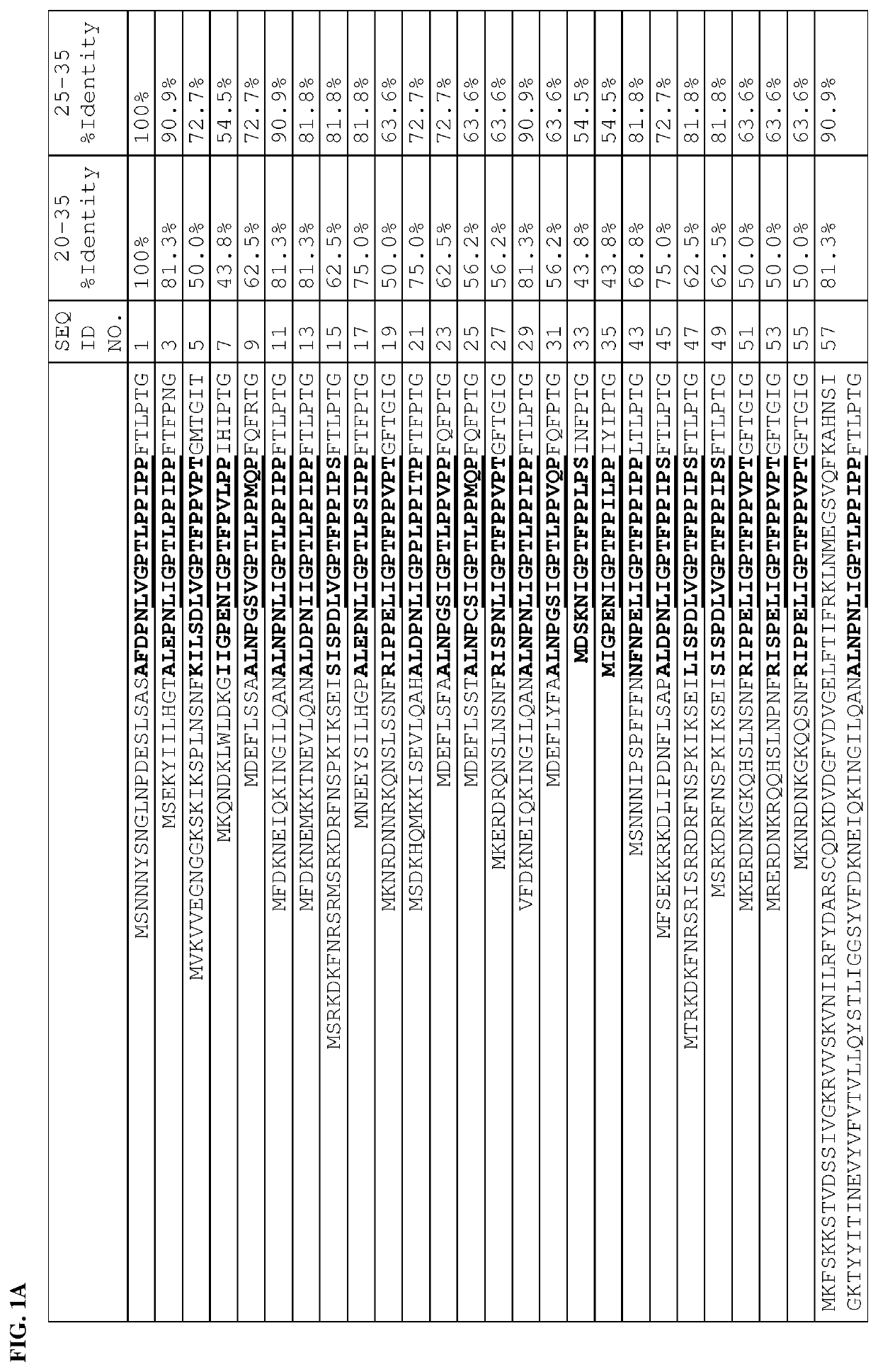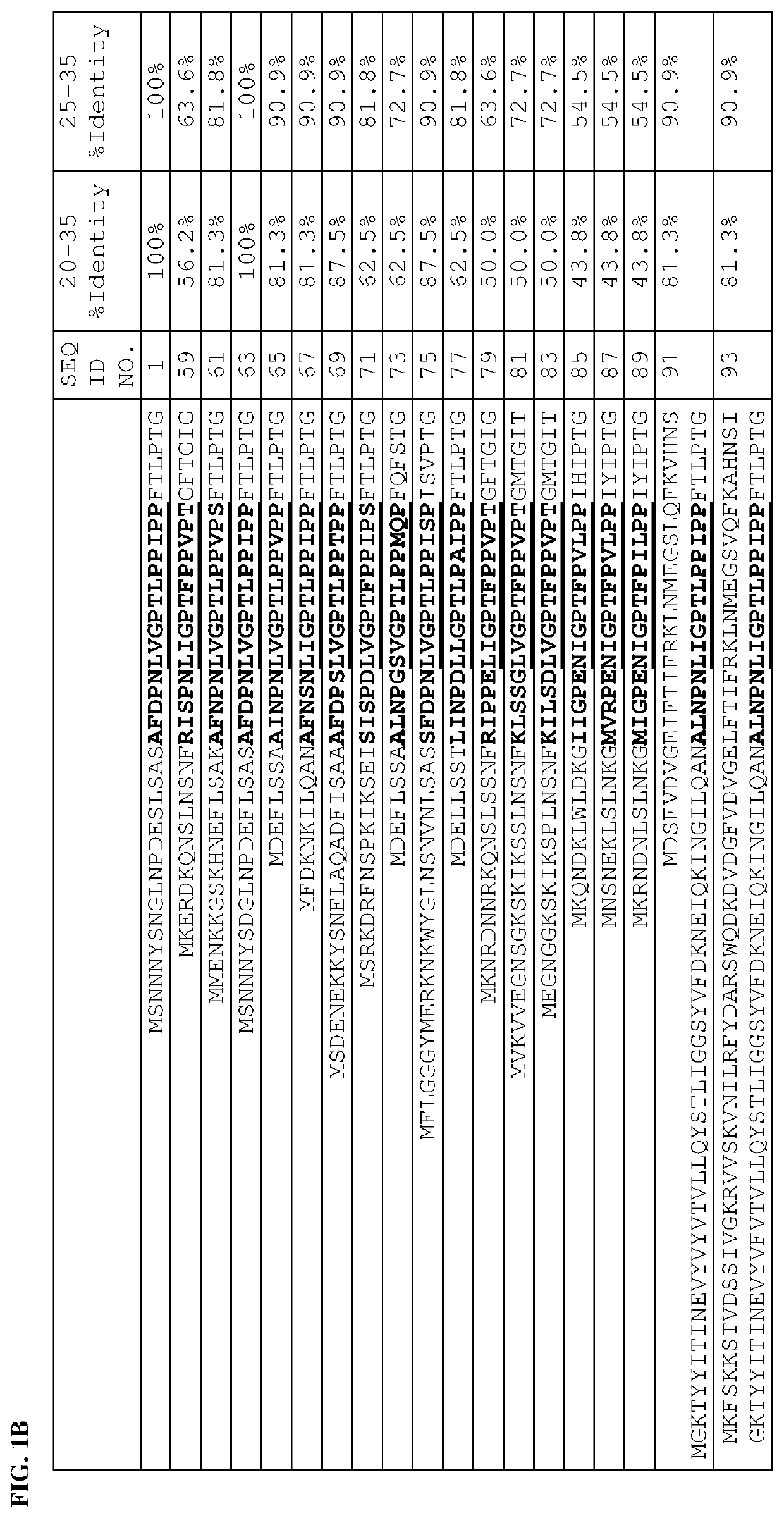Fusion proteins, recombinant bacteria, and exosporium fragements for plant health
a technology of fusion proteins and exosporium fragements, which is applied in the field of fusion proteins, can solve the problems of low survival rate of enzymes, proteins and peptides in soil, hampered previous attempts to introduce peptides, other proteins into soil to induce such beneficial effects on plants, and degradation of proteins in soil
- Summary
- Abstract
- Description
- Claims
- Application Information
AI Technical Summary
Benefits of technology
Problems solved by technology
Method used
Image
Examples
example 2
ant Growth Promotion Studies
[0457]Clear trays (5″×5″×2½″) were overlaid with 5″×5″ VersaPak (Anchor Paper Company, St. Paul, Minn.) cushioning material. In each tray, fifty seeds of canola were placed using sterile forceps, and treated with 50 mL diluted whole broth, such that each tray received at least 2×107 CFU of the BT013A wild type strain or the recombinant strain displaying the endopolygalacturonase cargo (the “EPG strain”), as described in Example 1. The untreated control trays received 50 mL of sterile water. A hundred seeds were assayed for each strain, and the untreated control in two trays each. The trays were placed in growth chamber racks set at 450 μmol m−2 sec−1 photosynthetic photon flux density (PPFD), 14-hours light (28° C.) / 10-hours dark (18° C.) in a randomized order and rotated daily to minimize positional effects for 21 days. Watering was done daily beginning day seven until the end of the experiment. No fertilizer or growth amendments were used.
[0458]Canola s...
example 3
Soy Water Stress Studies
[0459]Clear trays (8″×8″×3″) were filled with sand to approximately an inch from the top, and hydrated with 150 mL water amended with approximately 238 ppm N (fertilizer concentration measured as parts per million of nitrogen) of Peters 20-20-20 General Purpose Fertilizer (The Scotts Company, Marysville, Ohio). Sixteen seeds of corn and soy were planted at 1″ depth in four rows of four seeds each. Each tray was subsequently drenched with 50 mL of the above-described whole broth samples, such that each tray received at least 2×107 CFU of a whole broth culture of the BT013A wild type strain or the EPG strain. The untreated control trays received 50 mL of sterile water. The trays were placed in growth chamber racks set at 450 μmol m2 sec−1PPFD (photosynthetic photon flux density), 14-hours light (28° C.) / 10-hours dark (18° C.) in a randomized order and rotated daily to minimize positional effects for fourteen days. Watering was done daily for eight days after pl...
example 8
tment of Corn with Pectate Lyase and Exo-Polygalacturonase Resulted in Increased Plant Height
[0473]Pectate lyase or exo-polygalacturonase containing whole broth samples of BT013A-pBC218, BT013A-pBC222, BT013A-pBC223, BT013A-pBC224, BT013A-pBC225, BT013A-pBC226, and pectate lyase or exo-polygalacturonase containing exosporium fragment preparations of BT013AexsYKO-pBC218, BT013AexsYKO-pBC222, BT013AexsYKO-pBC223, BT013AexsYKO-pBC224, BT013AexsYKO-pBC225, BT013AexsYKO-pBC226, respectively, were prepared according to Example 7 (culture sporulation rates: approximately 99%; final spore concentrations: 1.1-1.7×108 spores per mL) and applied to corn seed (Beck's corn hybrid 5765 YH) at a use rate of 0.72 μL per seed. Treated seed were investigated in replicated trials with three replicates per trial and 18 seed per treatment in each replicate. Coated seeds were sowed directly into 39.7 cm3 pots containing sandy loam topsoil at a depth of 2.54 cm2, with two seeds per pot. After planting, 50...
PUM
| Property | Measurement | Unit |
|---|---|---|
| temperature | aaaaa | aaaaa |
| molecular weight | aaaaa | aaaaa |
| molecular weight | aaaaa | aaaaa |
Abstract
Description
Claims
Application Information
 Login to View More
Login to View More - R&D
- Intellectual Property
- Life Sciences
- Materials
- Tech Scout
- Unparalleled Data Quality
- Higher Quality Content
- 60% Fewer Hallucinations
Browse by: Latest US Patents, China's latest patents, Technical Efficacy Thesaurus, Application Domain, Technology Topic, Popular Technical Reports.
© 2025 PatSnap. All rights reserved.Legal|Privacy policy|Modern Slavery Act Transparency Statement|Sitemap|About US| Contact US: help@patsnap.com


